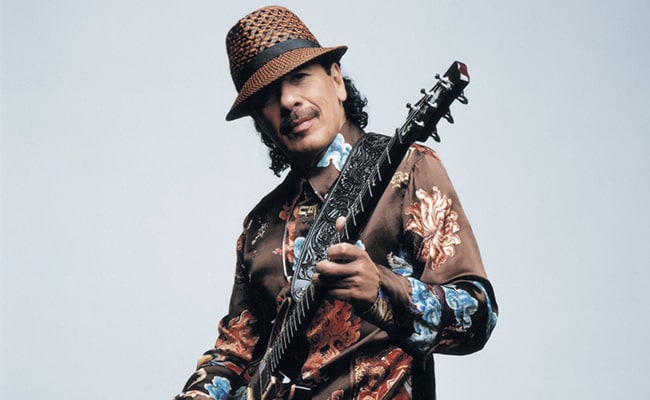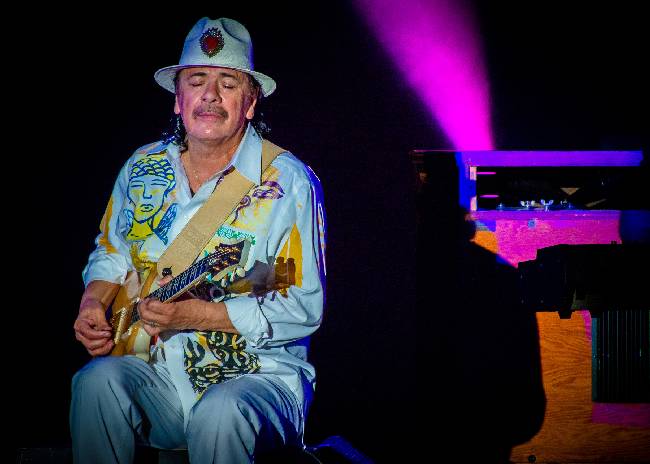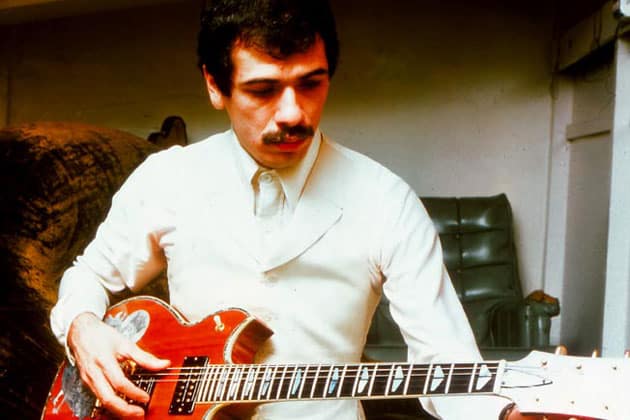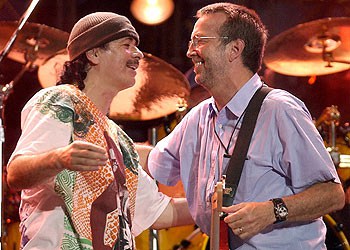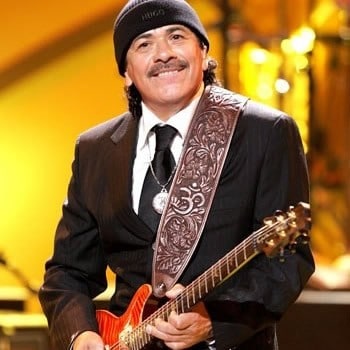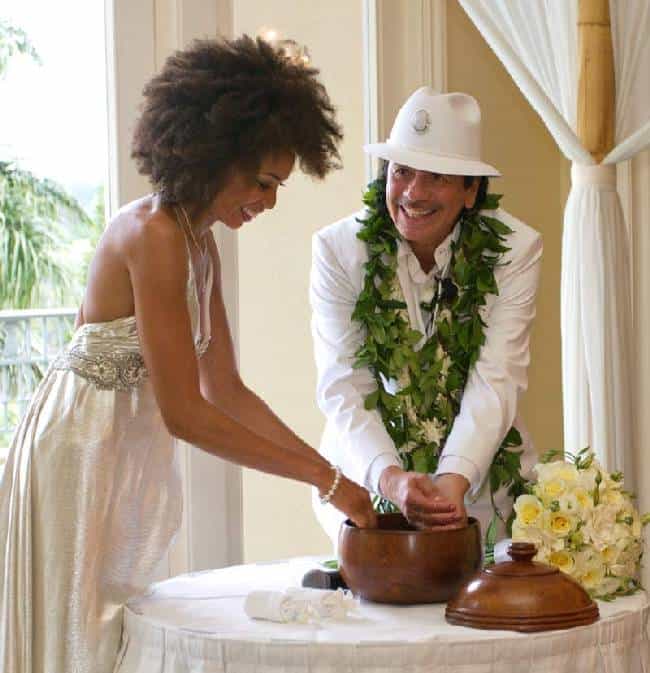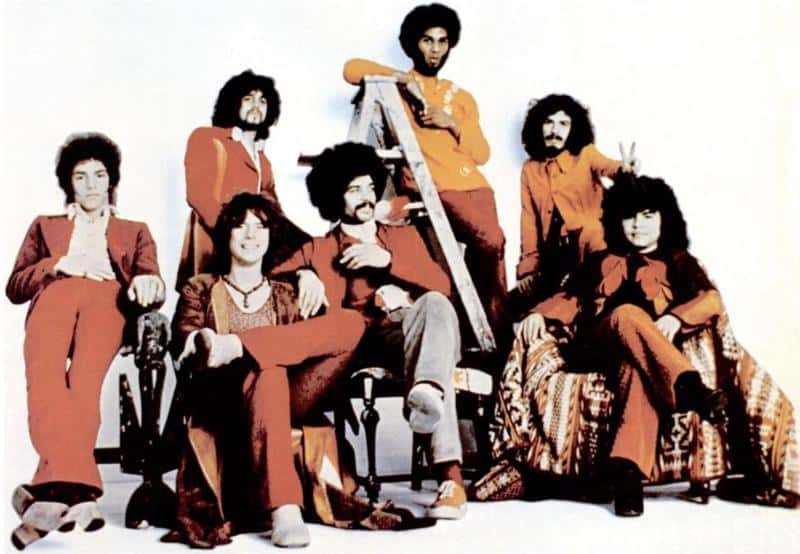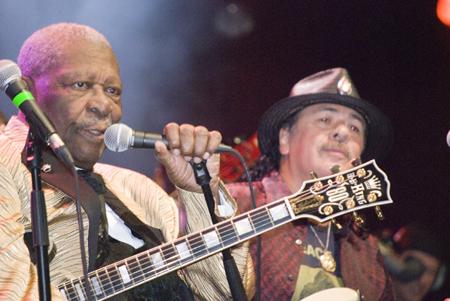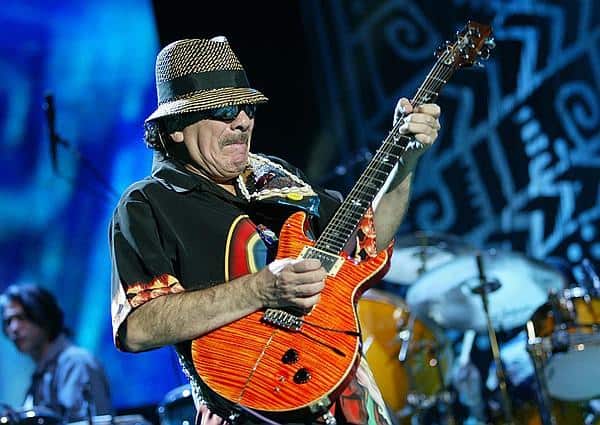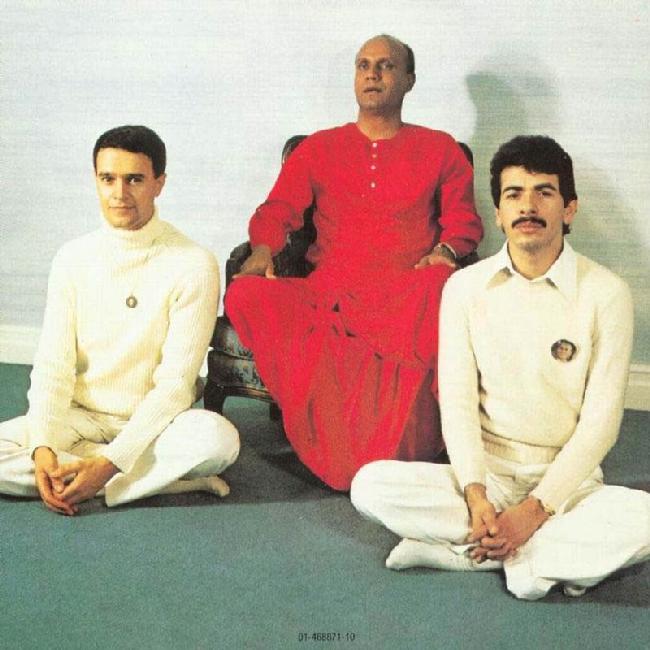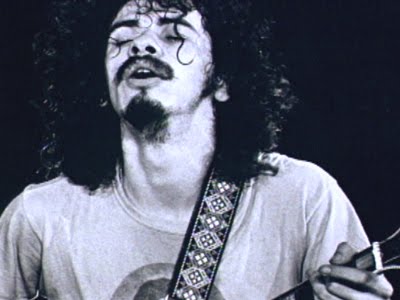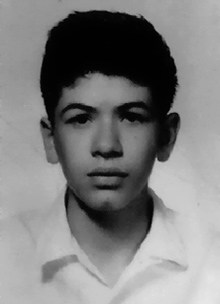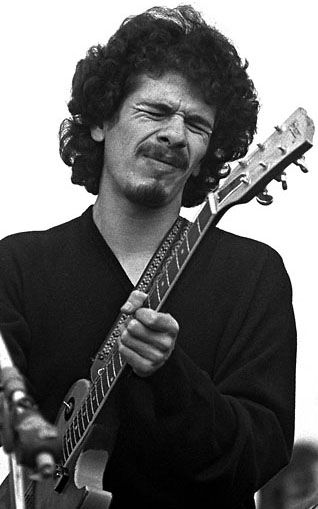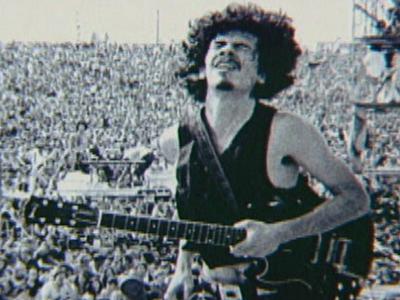Carlos Santana
Birth name: Carlos Santana
Born: July 20, 1947 - Autlán de Navarro, Jalisco, Mexico
Years active: 1966 -
Official site: http://www.santana.com/
Santana's social media: Facebook, Twitter
The sound of Santana's guitar playing is one of the most recognizable in the world. He pioneered a fusion of rock and Latin music, that is still characteristic of his style today. He uniquely blends Latin-infused rock, jazz, blues, salsa, and African rhythms.
He's not just one of the greatest living guitarists, #20 on Rolling Stones Magazines list of Greatest Guitarists, but also a very spiritual and noble person.
Playing style
Santana's sound has evolved a lot during his career, from the more raw style in the '60s to the more polished sound you hear today.
His style is a very characteristic blend of blues-based rock, salsa & jazz fusion, creating a rock-Latin sound.
You can identify Santana playing from just a few notes of a guitar song. There are several things very characteristic of his style:
- Long sustain: Santana is famous for playing reaaaaaaaally long sustained notes, and he plays them without adding vibrato. He achieves them by using humbuckers, heavy guitar bodies, overdriven amps, and finding a sweet spot on stage, where the physical distance from his amps in relation to his speakers allows for seemingly infinite feedback sustain.
- Trills: He adds a distinctive Latin flavor by hitting an initial grace note, hammering on to a higher note, than pulling off to the original note.
- Timing: The rhythm of Santana's riffs is very complex. He plays some notes earlier or later than you would expect, which creates a very unique style full of passion.
When talking about his playing style, we should also mention that a lot of his solos are based on the minor scale, Dorian mode, and Mixolydian mode.
Life story
Carlos was born in Mexico but moved to San Francisco with his family in the early '60s. He became a US citizen in 1965.
His father played the violin, which Santana learned to play by himself at the age of 5. He learned to play guitar at the age of 8. His first major influence was Ritchie Valens who recorded La Bamba. He was also influenced by B.B. King, Javier Bátiz, the Hungarian Gábor Szabó, Jimi Hendrix, Mike Bloomfield, Hank Marvin, and Peter Green.
As a teen, Santana's first gigs were playing at Tijuana strip clubs.
After moving to the USA and finishing high school in San Francisco, Santana chose not to go to college, even though he was accepted. Instead, he formed the Santana Blues Band (they soon changed their name to just Santana) with a few of his street musician friends in 1966. They combined rock with jazz, salsa, blues, and African rhythms, to create a unique blend of world music.
They got their big break after performing at Woodstock in 1969 when Columbia Records signed the band after Clive Davis, a Columbia rep heard them play at the festival. Their first album, "Santana", went triple platinum, and produced a Top 10 single, Evil Ways. Their next albums were also hits, creating timeless classics like Black Magic Woman and Oye Como Va.
The band members changed frequently, so the band was mostly associated with Santana himself.
In the '70s, he became disillusioned with the drug-addled world of rock music, so he, his wife, and guitarist John McLaughlin became followers of the Indian spiritual guru Sri Chimnoy. It was at this time when Santana turned to a new kind of spiritually oriented music.
In the mid-'70s, Santana starting playing more jazz music, and although he was popular among jazz fans, his sales plummeted. In 1976, he returned to his roots with the album "Amigos", which returned him to the charts.
Santana parted from the teachings of the Indian guru in 1982, since his rock lifestyle was unbecoming of his teachings, and also, Chimnoy was against Santana and his wife having children.
He was not very active in the '80s and '90s, but in 1999, his first producer, Clive Davis would again sign him, this time to Arista Records. Clive encouraged Santana to work with a collaboration of younger artists, so the album “Supernatural” was created, which skyrocketed Santana back into mainstream fame and fortune. The album won 9 Grammies in 2000. He has remained popular with new albums being released ever since.
In 2009, Santana received a Lifetime Achievement Award at the Billboard Latin Music Awards.
Family life
Santana married his band's drummer, Cindy Blackman in 2010.
Before that, he married Deborah Santana in 1973. They divorced after 34 years of marriage. They have 3 children:
- Salvador Santana, who is also a musician
- Angelica Santana
- Stella Santana
Guitars
Santana currently plays a custom-made PRS Santana Signature guitar, which is made out of a single solid piece of Brazilian rosewood. Check it out on the link, it is shown in "Santana yellow". You know you are cool when they not only name a guitar, but also a color after you...
He has played many-many types of guitars in the past, the notable ones being:
- Gibson SG Special
- SG Custom
- Yamaha SG 175B.
Amps
Santana plugs his guitar into several amps at the same time, which are all responsible for creating his signature sound: Mesa Boogie Mark I, Domble Overdrive Reverb, and a Bludotone amp. He has a 3-way amp switcher, so he can switch between amps as he likes, or even blend them together.
He uses several other types of amps as well:
- Marshall amps for distorted rhythm
- Fender Twin Reverb for clean rhythm
Guitar lessons by Santana himself
Santana remembers Woodstock
Santana and Eric Clapton on stage

